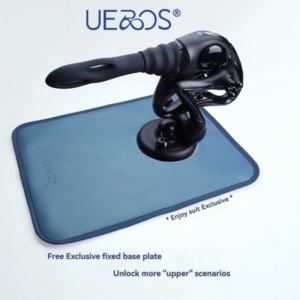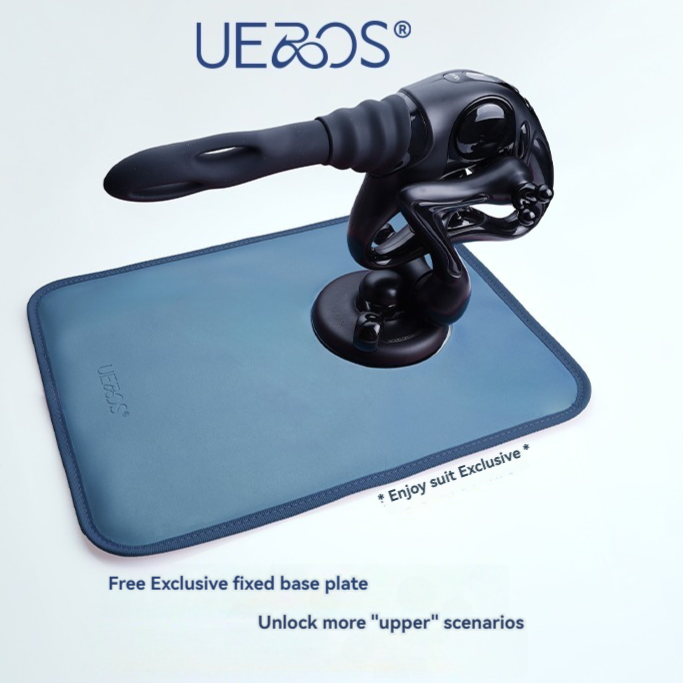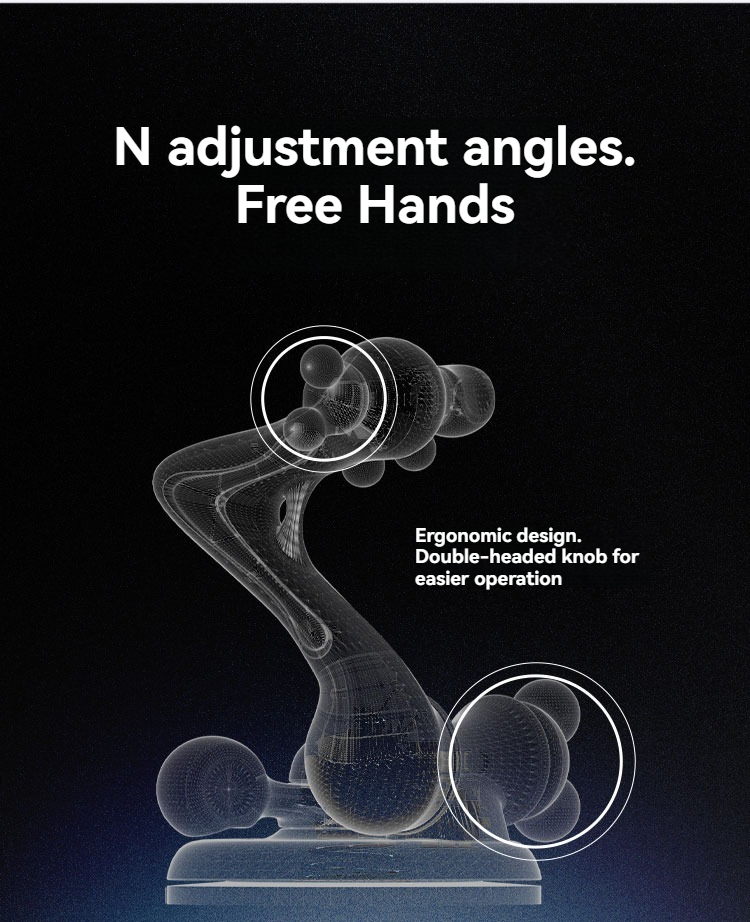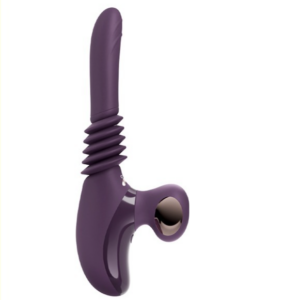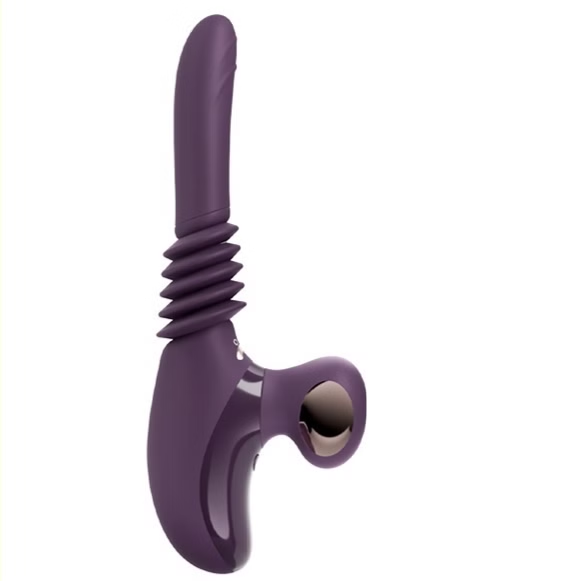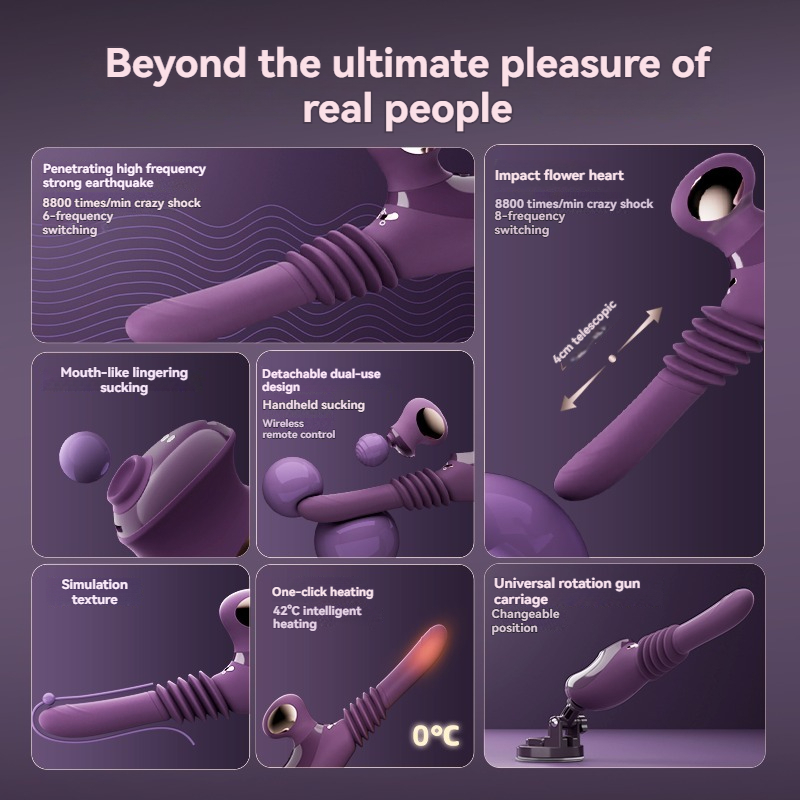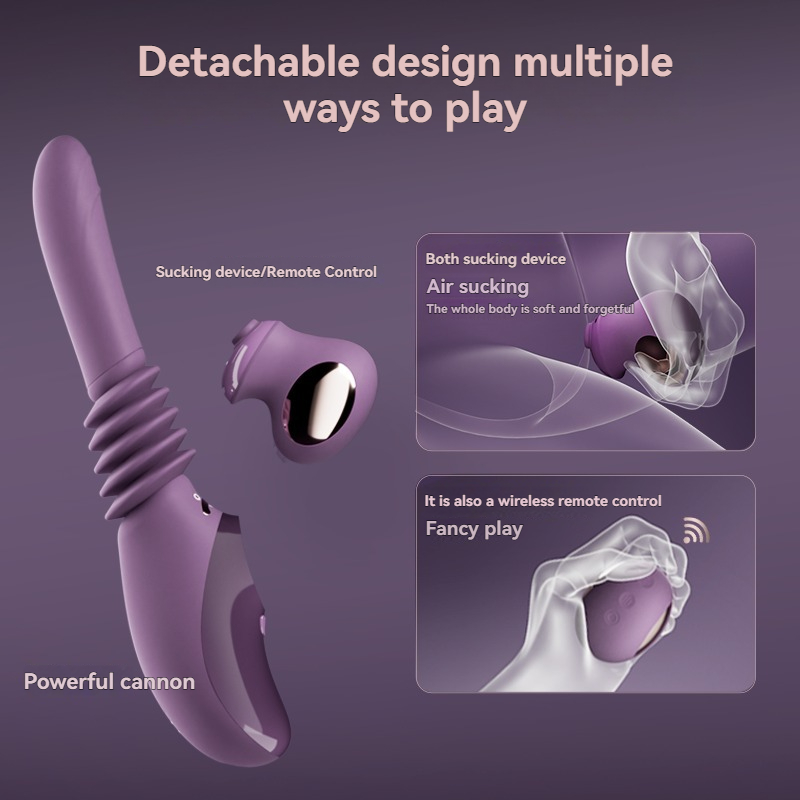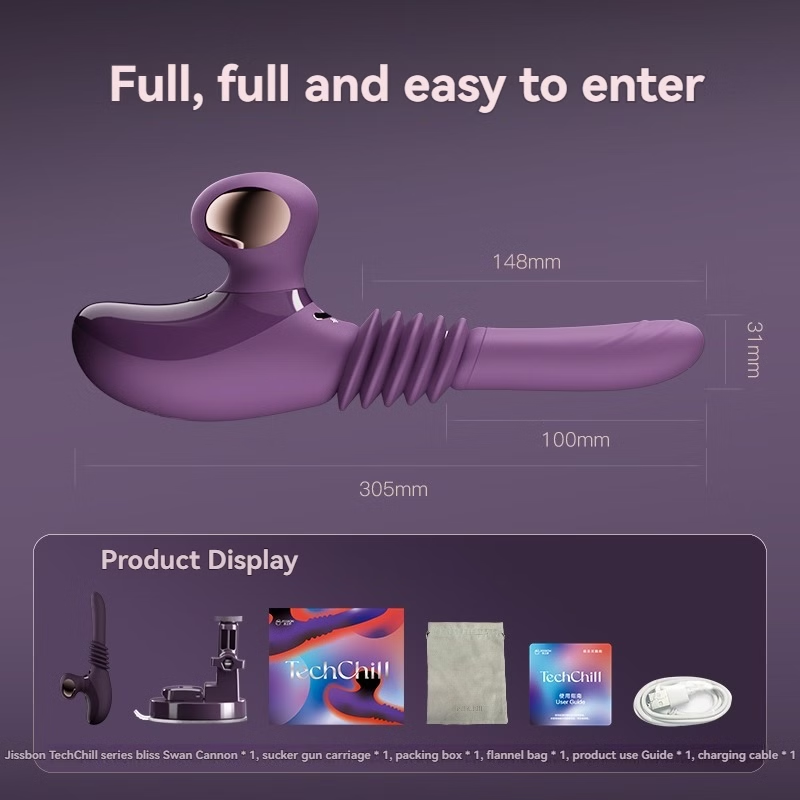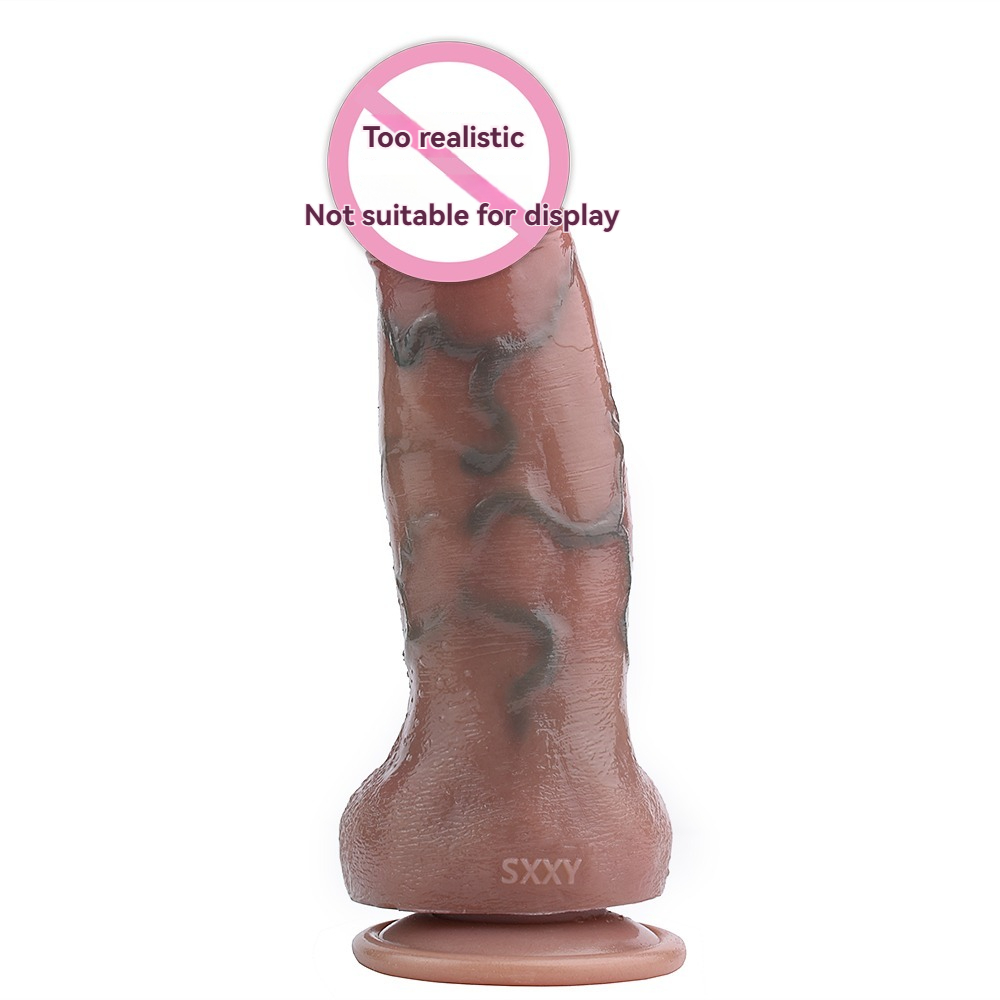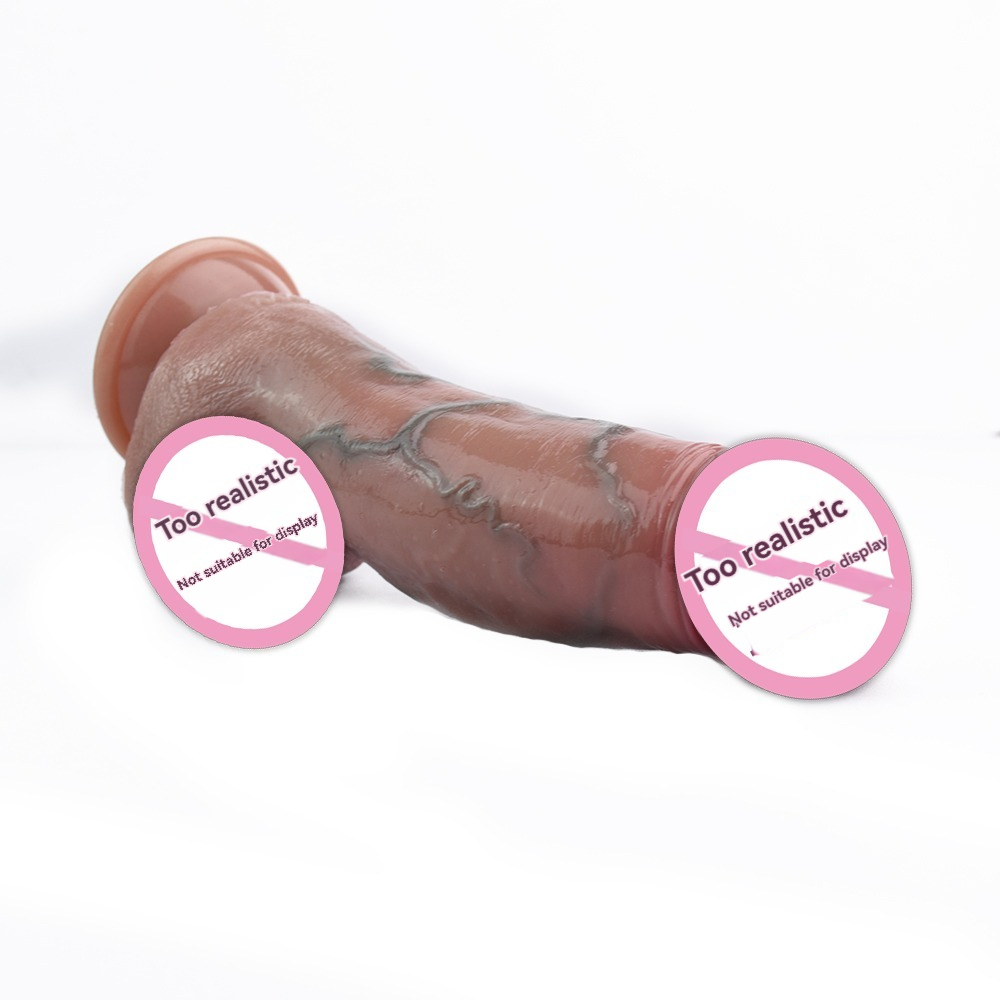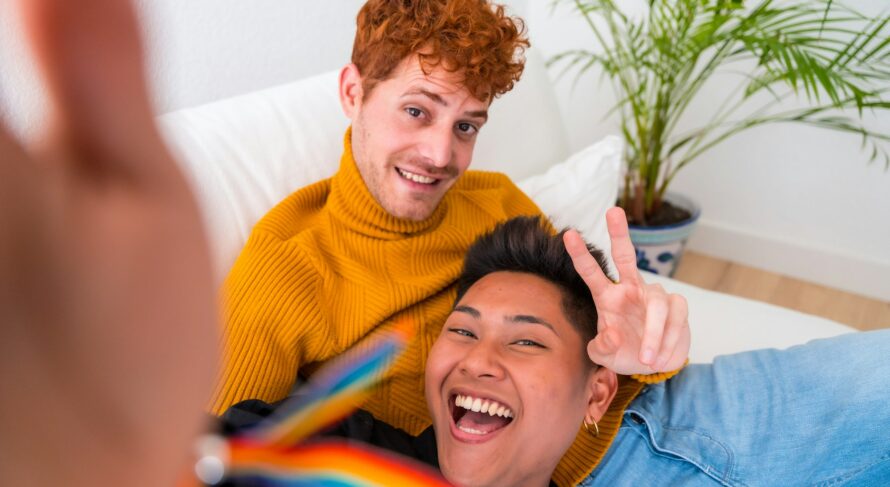Digital Love: Leveraging Technology and Apps for Gay Men’s Intimacy

Key Takeaways-Leveraging Technology and Apps for Gay Men’s Intimacy
- Technology and apps play a pivotal role in enhancing intimacy in gay relationships by facilitating communication, connection, and shared experiences.
- Effective use of digital tools can help overcome geographical barriers, improve emotional bonds, and enhance sexual intimacy.
- Intimacy-enhancing products from platforms like sextoyforyou.store can be seamlessly integrated with digital solutions to support and enrich intimate connections.
- Understanding and addressing potential challenges associated with technology use is essential for maintaining a healthy and fulfilling relationship.
- Continuous adaptation and mindful use of technology can foster deeper connections and sustained intimacy in gay relationships.
Table of Contents
- Introduction
- The Evolution of Technology in Gay Relationships
- Popular Apps for Enhancing Intimacy
- Communication Tools and Their Impact on Relationships
- Intimacy-Enhancing Products and Digital Integration
- Case Studies: Successful Use of Technology in Gay Relationships
- Comparison Table: Features of Top Intimacy Apps
- Best Practices for Leveraging Technology in Intimacy
- Potential Challenges and Solutions
- Conclusion
- Frequently Asked Questions (FAQs)
- References
Introduction
In the digital age, technology has revolutionized the way we connect, communicate, and cultivate relationships. For gay men, technology and apps offer unique opportunities to enhance intimacy, overcome barriers, and foster deeper emotional and physical connections. From communication platforms to intimacy-enhancing products, digital solutions play a crucial role in modern gay relationships, providing tools that support and enrich the bonds between partners.
Intimacy, a cornerstone of any romantic relationship, encompasses emotional closeness, trust, and physical connection. Technology, when leveraged thoughtfully, can amplify these aspects, making it easier for couples to maintain and enhance their intimate relationships. This comprehensive guide explores how gay men can effectively utilize technology and apps to boost intimacy, offering strategies, tools, and best practices to navigate the digital landscape of modern relationships.
Whether you’re seeking to deepen your emotional bond, enhance your physical intimacy, or maintain connection across distances, this guide provides the insights and resources needed to harness the power of technology for a fulfilling and intimate gay relationship.

The Evolution of Technology in Gay Relationships
Historical Perspective
The intersection of technology and relationships has evolved significantly over the past few decades. In the early days of the internet, gay men often relied on online platforms to connect, find support, and form relationships in a society that was less accepting. Online forums, chat rooms, and early dating websites provided essential spaces for gay men to meet and interact safely.
With the advent of smartphones and the proliferation of mobile apps, the landscape of gay relationships has transformed even further. Apps specifically designed for gay men, such as Grindr, have become integral tools for meeting potential partners, fostering connections, and facilitating communication.
Today, technology encompasses a wide range of tools and platforms that support various aspects of gay relationships, from emotional intimacy and communication to sexual health and intimacy-enhancing products. This evolution reflects the broader societal acceptance and the increasing importance of technology in everyday life, making it easier than ever for gay men to cultivate and maintain intimate relationships.
Impact of Social Media and Mobile Apps
Social media and mobile apps have had a profound impact on gay relationships, offering new avenues for connection and intimacy. Platforms like Facebook, Instagram, and Twitter allow gay men to connect with a broader community, share their lives, and engage in meaningful conversations.
Dating apps like Grindr, Scruff, and HER have revolutionized the way gay men meet and interact, providing immediate access to potential partners and facilitating connections based on mutual interests and preferences. These apps not only simplify the dating process but also empower users to explore their identities and build connections in a safe and controlled environment.
Moreover, technology has enabled gay men to maintain relationships across long distances through video calls, messaging apps, and virtual shared experiences. This connectivity is crucial for sustaining intimacy in relationships where partners may live in different cities or countries.
The integration of social media and mobile apps into gay relationships underscores the importance of technology in enhancing intimacy, communication, and emotional bonds between partners.

Popular Apps for Enhancing Intimacy
Grindr
Grindr is one of the most well-known dating apps for gay men, offering a platform for men to connect based on location and mutual interests. While primarily used for dating and casual encounters, Grindr can also be a tool for fostering deeper connections by facilitating initial meetings and ongoing communication.
Grindr’s features, such as chat functions, photo sharing, and location-based searches, make it easy for users to find and connect with potential partners. This immediacy and ease of use can help gay men establish initial connections that can develop into more intimate and meaningful relationships.
However, while Grindr is effective for meeting new people, users must navigate its casual nature to transition into deeper relationships. Building intimacy through Grindr requires intentional effort in communication, trust-building, and mutual respect.
Scruff
Scruff is another popular app catering to gay men, with a focus on creating a community and fostering meaningful connections. Unlike Grindr, Scruff emphasizes inclusivity and offers features that support both casual and serious relationships.
Scruff’s extensive profile options, including interests, travel preferences, and lifestyle details, allow users to find partners who align with their values and interests, facilitating more compatible and intimate connections.
The app also offers community-building features, such as events and groups, which enable users to engage in shared activities and experiences, enhancing emotional bonds and fostering a sense of belonging.
HER
While HER is primarily designed for lesbian, bisexual, and queer women, it also supports connections within the broader LGBTQ+ community, including gay men. HER offers a platform for socializing, dating, and building friendships, providing a space for gay men to engage with like-minded individuals.
The app’s emphasis on community and inclusivity makes it a valuable tool for fostering both romantic and platonic relationships, enhancing emotional intimacy through shared interests and values.
Other Notable Apps
In addition to Grindr and Scruff, several other apps cater to gay men, each offering unique features that support different aspects of intimacy:
- Hornet: Focuses on community and social networking, offering features like news feeds and event listings to foster connections.
- Jack’d: Known for its diverse user base and emphasis on creating a safe and inclusive environment for gay men.
- Chappy: Designed to cater to different relationship types, including casual and serious relationships, promoting a respectful and user-friendly experience.
These apps provide various tools and features that support the development of both emotional and physical intimacy, making them valuable resources for gay men seeking to enhance their relationships.
Communication Tools and Their Impact on Relationships
Messaging Apps
Messaging apps like WhatsApp, Telegram, and Signal are essential tools for maintaining communication and fostering intimacy in gay relationships. These platforms enable real-time conversations, sharing of photos and videos, and the ability to stay connected throughout the day.
Effective communication through messaging apps helps couples express their feelings, share daily experiences, and maintain a sense of closeness, even when physically apart. The convenience and accessibility of these apps ensure that partners can communicate effortlessly, enhancing emotional bonds and intimacy.
Moreover, features like voice messages and video calls add a personal touch to interactions, allowing for more nuanced and meaningful conversations that can strengthen the relationship.
Video Calling Platforms
Video calling platforms such as Zoom, Skype, and FaceTime play a crucial role in maintaining intimacy, especially in long-distance relationships. These tools provide a visual and auditory connection that simulates face-to-face interactions, making it easier for couples to share experiences and emotions.
Regular video calls allow partners to engage in shared activities, such as watching movies together, cooking, or simply having a heartfelt conversation, fostering a deeper emotional connection and enhancing intimacy.
Additionally, video calls can help couples navigate conflicts and misunderstandings more effectively by providing a more personal and immediate means of communication, reducing the chances of misinterpretation that can occur through text-based communication.
Virtual Shared Experiences
Technology has enabled couples to engage in virtual shared experiences, which are essential for maintaining intimacy in the digital age. Platforms like Netflix Party, Houseparty, and virtual reality (VR) environments allow gay men to share activities and experiences, even when physically separated.
Virtual shared experiences, such as watching movies together, playing online games, or exploring virtual worlds, create opportunities for bonding and collaboration, enhancing the emotional and physical intimacy between partners.
These shared activities provide a sense of togetherness and companionship, reinforcing the emotional connection and fostering a more intimate and satisfying relationship.

Intimacy-Enhancing Products and Digital Integration
Smart Intimacy Devices
Smart intimacy devices, such as connected vibrators and remote-controlled toys, offer innovative ways to enhance physical intimacy in gay relationships. These devices can be controlled via smartphone apps, allowing partners to interact and share intimate moments regardless of their physical location.
Products like the We-Vibe Sync and the Lovense Lush are designed to provide customizable and interactive experiences, enabling couples to maintain a physical connection even when apart. These devices promote shared pleasure and foster a sense of closeness, strengthening the intimate bond between partners.
Integrating smart intimacy devices into the relationship can help overcome physical barriers, enhance sexual satisfaction, and promote mutual exploration and experimentation, contributing to a more fulfilling and intimate connection.
Wearable Technology
Wearable technology, such as smartwatches and fitness trackers, can also play a role in enhancing intimacy. These devices enable couples to share health and activity data, fostering a sense of partnership and mutual support in maintaining a healthy lifestyle.
Features like heart rate monitoring, step counting, and activity sharing encourage partners to engage in physical activities together, promoting both physical well-being and emotional connection. This shared focus on health and fitness can enhance the overall quality of the relationship, fostering a deeper sense of intimacy and mutual respect.
Intimacy Apps
Intimacy apps like Between and Avocado are designed specifically for couples to enhance their intimate connection. These apps offer features such as private messaging, shared calendars, and memory-sharing tools that help couples stay connected and engaged in their relationship.
Between, for example, allows couples to create a private space where they can share photos, messages, and special moments, fostering a sense of exclusivity and intimacy. Avocado offers similar features, along with tools for planning date nights and setting relationship goals, enhancing both emotional and physical intimacy.
These intimacy apps provide structured and intentional ways for couples to nurture their relationship, promoting continuous engagement and connection, which are vital for maintaining a healthy and fulfilling intimate life.
Integration with Intimacy-Enhancing Products
Integrating intimacy-enhancing products with digital tools can further amplify the benefits of technology in gay relationships. For instance, using smart vibrators in conjunction with intimacy apps allows couples to synchronize their intimate moments, enhancing both emotional and physical connections.
Products from platforms like sextoyforyou.store offer a range of tools that can be seamlessly integrated with digital solutions, providing a holistic approach to enhancing intimacy. These integrations promote mutual exploration, shared experiences, and sustained intimacy, making it easier for couples to maintain a fulfilling and connected relationship.
Case Studies: Successful Use of Technology in Gay Relationships
Case Study 1: Enhancing Long-Distance Intimacy with Smart Devices
Tom and Jake, a gay couple in a long-distance relationship, faced challenges in maintaining their intimate connection due to Tom’s frequent business trips overseas. The physical separation led to feelings of loneliness and disconnection, making it difficult to sustain their emotional and physical intimacy.
To overcome these challenges, Tom and Jake turned to smart intimacy devices from sextoyforyou.store, such as the Lovense Remote-controlled vibrator. These devices allowed Jake to initiate stimulation during Tom’s business trips, creating a sense of presence and shared pleasure despite the distance.
Additionally, they utilized video calling platforms like Zoom and messaging apps to maintain regular communication and share their daily experiences. By combining smart devices with consistent digital communication, Tom and Jake were able to maintain their intimacy and emotional bond, demonstrating the effectiveness of integrating technology and intimacy-enhancing products in long-distance relationships.
This case study highlights how technology can bridge physical gaps, providing couples with the tools needed to sustain intimacy and connection regardless of geographical separation.
Case Study 2: Strengthening Emotional Bonds through Intimacy Apps
Ryan and Sean, another gay couple, struggled with maintaining their emotional intimacy due to their busy work schedules and differing time zones. The lack of consistent communication led to feelings of neglect and emotional distance.
To address this, Ryan and Sean decided to use the intimacy app Between, which allowed them to create a private space for sharing messages, photos, and special moments. The app’s features enabled them to stay connected throughout the day, even when they couldn’t be physically together.
Additionally, they incorporated shared activities facilitated by the app, such as planning virtual date nights and setting relationship goals. By leveraging the tools provided by Between, Ryan and Sean were able to strengthen their emotional bond, enhance their communication, and foster a deeper sense of intimacy.
Furthermore, they utilized intimacy-enhancing products from sextoyforyou.store to complement their digital interactions, creating a more holistic and fulfilling intimate experience.
This case study illustrates how intimacy apps can play a significant role in enhancing emotional bonds, especially for couples navigating the challenges of busy schedules and time zone differences.
Case Study 3: Utilizing Virtual Shared Experiences to Boost Intimacy
Chris and Leo, a gay couple, found that their intimate connection was waning due to the monotony of daily routines and lack of shared activities. They sought ways to inject novelty and excitement into their relationship to reignite their emotional and physical intimacy.
They decided to leverage technology by engaging in virtual shared experiences, such as using Netflix Party to watch movies together and exploring virtual reality (VR) environments to engage in immersive activities. These shared digital experiences provided new avenues for connection and enjoyment, breaking the routine and fostering a sense of adventure and collaboration.
Additionally, they used messaging apps to plan and coordinate these activities, ensuring that they had regular opportunities to connect and bond. By integrating virtual shared experiences into their relationship, Chris and Leo were able to enhance their intimacy, making their connection more dynamic and fulfilling.
Moreover, they incorporated intimacy-enhancing products from sextoyforyou.store to further enrich their physical connection, complementing their digital interactions and fostering a more holistic intimate experience.
This case study demonstrates the power of virtual shared experiences in revitalizing intimacy and creating memorable and meaningful connections in gay relationships.
Comparison Table: Features of Top Intimacy Apps
| App | Key Features | Benefits | Best For |
|---|---|---|---|
| Between | Private messaging, shared calendar, photo sharing, memory logs | Enhances communication, fosters emotional intimacy, organizes relationship milestones | Couples seeking to deepen emotional bonds and maintain organized relationship activities |
| Couples | Shared tasks, photo albums, secret messages, quizzes | Promotes collaboration, enhances understanding, provides fun ways to connect | Couples looking for interactive ways to strengthen their relationship |
| Love Nudge | Relationship goals, personalized nudges, communication tips | Improves relationship dynamics, fosters mutual growth, enhances communication | Couples aiming to set and achieve relationship goals together |
| Relish | Daily relationship tips, quizzes, personalized advice | Provides ongoing support, enhances relationship skills, fosters continuous improvement | Couples seeking guidance and resources for relationship enhancement |
| Honeydue | Shared budgeting, expense tracking, financial goals | Promotes financial transparency, enhances collaboration, reduces financial stress | Couples looking to manage finances together and reduce money-related conflicts |
Best Practices for Leveraging Technology in Intimacy
Prioritize Open Communication
Effective communication is the cornerstone of any intimate relationship. Leveraging technology should enhance, not replace, the depth and quality of communication between partners. Couples should prioritize open and honest dialogue, discussing their needs, desires, and any concerns related to technology use.
Regularly setting aside time for meaningful conversations ensures that both partners feel heard and valued, fostering a stronger emotional bond and enhancing intimacy.
Set Boundaries for Technology Use
While technology can enhance intimacy, it’s essential to set boundaries to prevent it from becoming a source of distraction or conflict. Couples should agree on how and when to use certain apps and devices, ensuring that technology supports rather than hinders their relationship.
For example, establishing “tech-free” times or spaces can encourage face-to-face interactions and ensure that digital communication doesn’t replace meaningful personal connection.
Integrate Intimacy-Enhancing Products Thoughtfully
Intimacy-enhancing products, such as smart vibrators and remote-controlled devices, should be integrated thoughtfully into the relationship. Couples should discuss their comfort levels and preferences, ensuring that the use of these products is consensual and aligned with their intimate needs.
Using these products as tools for mutual exploration and pleasure can enhance physical intimacy, promote shared experiences, and strengthen the emotional bond between partners.
Stay Informed About Technology Trends
Technology is continually evolving, with new apps and tools emerging that can support relationship intimacy. Staying informed about the latest trends and innovations allows couples to explore new ways to enhance their connection and adapt to changing relationship dynamics.
Regularly researching and experimenting with new technologies can keep the relationship dynamic and ensure that couples are leveraging the most effective tools available to support their intimacy.
Balance Digital and Physical Intimacy
While technology offers numerous benefits for enhancing intimacy, it’s crucial to maintain a balance between digital and physical interactions. Physical presence and touch are irreplaceable components of intimate relationships, and couples should ensure that digital tools complement rather than substitute these fundamental aspects.
Incorporating both digital and physical intimacy practices ensures a well-rounded and fulfilling intimate life, fostering a deeper and more resilient connection between partners.
Potential Challenges and Solutions
Privacy and Security Concerns
As technology becomes more integrated into intimate relationships, privacy and security become significant concerns. Sharing personal and intimate information through apps and devices requires trust in the platforms’ security measures to protect sensitive data.
To mitigate these concerns, couples should choose reputable apps and products that prioritize user privacy and data security. Reading privacy policies, enabling two-factor authentication, and regularly updating software can help protect personal information and maintain trust in the relationship.
Over-Reliance on Technology
While technology can enhance intimacy, over-reliance on digital tools can lead to a reduction in face-to-face interactions and genuine emotional connections. Couples must ensure that technology serves as a supplement to, rather than a replacement for, personal and physical interactions.
Establishing boundaries for technology use and prioritizing in-person interactions can help maintain a healthy balance, ensuring that the relationship remains strong and intimate without becoming overly dependent on digital tools.
Managing Distractions and Time Consumption
Technology can sometimes be a source of distraction, diverting attention away from intimate interactions. The constant notifications and the allure of digital platforms can interfere with the quality time couples spend together.
Implementing strategies such as designated “tech-free” times, using apps that limit screen time, and creating intentional spaces for undistracted interactions can help manage these distractions, ensuring that technology enhances rather than detracts from intimacy.
Addressing Technological Miscommunications
Digital communication lacks the nuances of face-to-face interactions, increasing the risk of misunderstandings and miscommunications. Text-based conversations can be easily misinterpreted, leading to conflicts and emotional distance.
To address this, couples should strive to combine digital communication with regular verbal and visual interactions, such as phone calls and video chats. Additionally, being mindful of tone and context in digital messages can reduce the chances of miscommunication and foster clearer, more effective communication.
Keeping Up with Technological Advancements
The rapid pace of technological advancements can make it challenging for couples to keep up with the latest tools and trends that can support their intimacy. Staying informed and adapting to new technologies requires continuous learning and flexibility.
Couples can stay updated by following tech blogs, participating in forums, and experimenting with new apps and devices together. Embracing a proactive approach to technology use ensures that couples can leverage the most effective tools to enhance their intimacy and relationship dynamics.
Conclusion
Technology has undeniably transformed the landscape of gay relationships, offering innovative tools and platforms that enhance intimacy, communication, and emotional connection. By leveraging technology and apps thoughtfully, gay men can overcome barriers, sustain intimate connections across distances, and foster deeper emotional and physical bonds.
However, the effective use of technology in relationships requires a balanced approach, prioritizing open communication, setting boundaries, and integrating intimacy-enhancing products in a consensual and respectful manner. Addressing potential challenges such as privacy concerns, over-reliance on digital tools, and technological miscommunications is essential for maintaining a healthy and fulfilling intimate life.
Integrating products from reputable sources like sextoyforyou.store further enriches the intimate connection, providing couples with the tools to explore and enhance their physical intimacy in a safe and enjoyable way.
As technology continues to evolve, so too do the opportunities for gay men to cultivate and sustain intimate relationships that are both fulfilling and resilient. Embracing digital solutions while maintaining a commitment to personal and emotional connection ensures that intimacy remains a central and cherished aspect of gay relationships in the digital age.
By adopting best practices and staying informed about the latest technological advancements, couples can harness the power of technology to create a harmonious and deeply connected partnership that stands the test of time.
Frequently Asked Questions (FAQs)
1. How can technology enhance intimacy in gay relationships?
Technology can enhance intimacy by facilitating better communication, enabling virtual shared experiences, and providing tools for maintaining emotional and physical connections, especially in long-distance relationships. Apps and devices designed for intimacy can help couples explore new dimensions of their relationship, foster mutual understanding, and sustain their connection through digital means.
2. What are the best apps for enhancing intimacy in gay relationships?
Some of the best apps for enhancing intimacy in gay relationships include Between, Couples, Love Nudge, Relish, and Honeydue. These apps offer features like private messaging, shared calendars, relationship tips, and intimacy-enhancing tools that help couples stay connected, communicate effectively, and strengthen their emotional bonds.
3. How can remote-controlled devices support long-distance intimacy?
Remote-controlled devices, such as connected vibrators and interactive toys, allow partners to engage in physical intimacy even when they are apart. These devices can be controlled via smartphone apps, enabling one partner to initiate stimulation and shared pleasure remotely. This technology helps maintain a sense of presence and shared intimacy, fostering a deeper emotional and physical connection despite the physical distance.
4. What are some best practices for using technology to enhance intimacy without over-reliance?
Best practices include setting boundaries for technology use, prioritizing face-to-face interactions, balancing digital and physical intimacy, and using technology as a supplement rather than a replacement for personal connections. Couples should also communicate openly about their technology usage, ensuring that digital tools enhance their relationship without becoming a source of distraction or conflict.
5. How can couples ensure the privacy and security of their intimate communications on apps?
Couples can ensure privacy and security by choosing reputable apps with robust security measures, enabling two-factor authentication, regularly updating software, and being cautious about sharing sensitive information. It’s also important to review and adjust privacy settings to control who can access their information and interactions, ensuring that their intimate communications remain protected.
References
- American Psychological Association. (2020). Long-Term Relationships and Sexual Health. Retrieved from https://www.apa.org/topics/long-term-relationships
- Gottman, J. M., & Silver, N. (1999). The seven principles for making marriage work. Harmony Books. Retrieved from https://www.harmonybooks.com/
- Hatfield, E., & Rapson, R. L. (2005). Emotional intimacy and relationship satisfaction. Taylor & Francis. Retrieved from https://www.taylorfrancis.com/books/mono/10.4324/9780203076984/emotional-intimacy-relationship-satisfaction-eric-hatfield-robert-rapson
- Meyer, I. H. (2003). Prejudice, social stress, and mental health in lesbian, gay, and bisexual populations: Conceptual issues and research evidence. Psychological Bulletin, 129(5), 674-697. Retrieved from https://doi.org/10.1037/0033-2909.129.5.674
- Rempel, J. K., Holmes, J. G., & Zanna, M. P. (1985). Trust in close relationships. Journal of Personality and Social Psychology, 49(1), 95-112. Retrieved from https://doi.org/10.1037/0022-3514.49.1.95
- Reisner, S. L., White, J. M., Braxton, M., & McRee, B. (2015). Sexual Practices and Health Behaviors Among MSM Using a Geosocial Networking App: Implications for HIV Prevention. American Journal of Public Health, 105(4), e5-e14. Retrieved from https://doi.org/10.1007/s10508-015-0543-3
- Stafford, L. (2010). Maintaining long-term relationships. In B. B. Whisman & M. P. Kendler (Eds.), Handbook of marital status and marital transition (pp. 311-332). Springer. Retrieved from https://www.springer.com/gp/book/9780387719127
- World Health Organization. (2013). Guidelines for the management of conditions specifically related to stress. Retrieved from https://apps.who.int/iris/handle/10665/76544

















